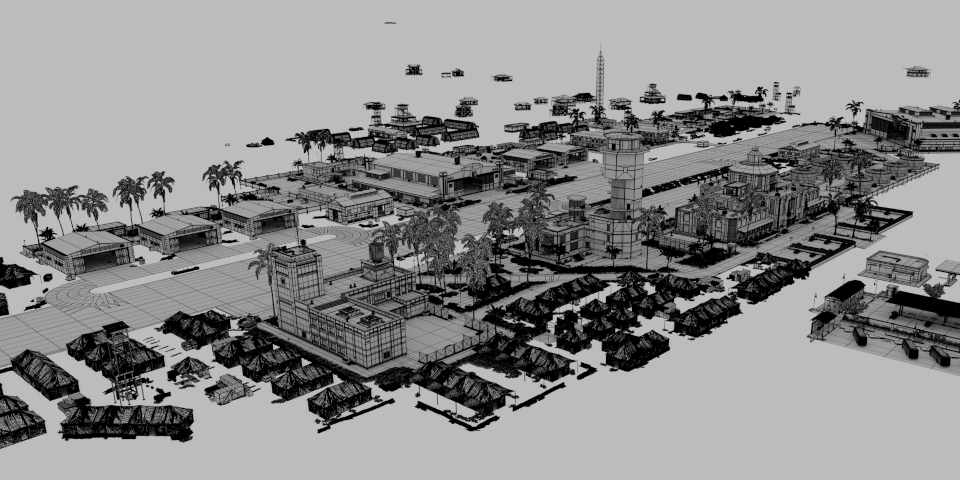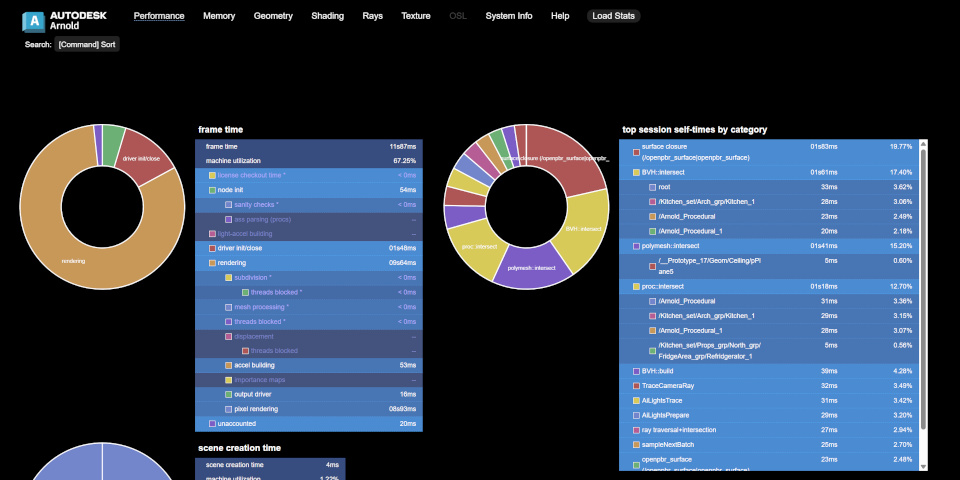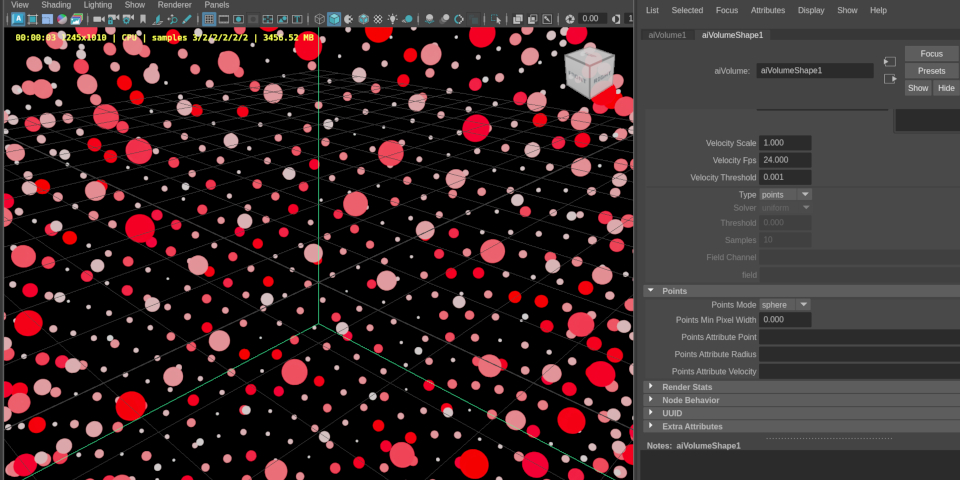Autodesk releases Arnold 7.4.1

Autodesk has released Arnold 7.4.1, the latest version of the production renderer.
The update adds support for Toon Shading when rendering on the GPU, improves performance in complex scenes, and adds a new interactive HTML-based viewer for render statistics.
The new functionality is available in all of Arnold’s integration plugins, with the Maya plugin also getting better handling of OpenVDB point data.
Toon shading can now be rendered on the GPU
Arnold 7.4.1 makes it possible to use the toon shading features – the Toon shader itself, and the Contour filter – when rendering on the GPU, as well as on CPU.
The GPU implementation is currently limited to direct lighting only, so it does not support reflections, refractions, or indirect lighting, in addition to the standard limitations on CPU.

Faster rendering of complex scenes with procedural instancing
The update also improves render performance, particularly in complex scenes with a lot of procedural instancing.
The new options.procedural_instancing_optimization flag “usually produces speedups between 1-2x, but for sufficiently complex scenes the speedup can be significantly larger”.
According to the release notes, Activision’s new Caldera USD data set (shown above), which is based on a map from Call of Duty: Warzone, renders a full 18x faster.
Parallel scene initiation also now scales better with CPU cores, reducing time to first pixel on many-core machines.
Improvements to Global Light Sampling and USD workflows
In addition, rendering photometric (IES) lights and mesh lights using Global Light Sampling now generates higher-quality results for the same render settings and render times.
In the comparison images in the release notes, the difference is particularly striking on a motion-blurred mesh.
When rendering USD data, Arnold now uses Hydra by default to handle the translation from USD, which makes the resulting render consistent with its Hydra render delegate.

New interactive viewer for render statistics
Arnold 7.4.1 also introduces a new HTML-based interactive viewer for render statistics.
It displays render stats – such as frame render time, render time by category or by node, memory usage, and texture usage – in a visual format, making it easier to troubleshoot performance bottlenecks.
Support in the integration plugins
All of Arnold’s integration plugins have been updated to support the new features:
3ds Max: MAXtoA 5.8.1
Cinema 4D: C4DtoA 4.8.1
Houdini: HtoA 6.4.1
Katana: KtoA 4.4.1
Maya: MtoA 5.5.1

Newer than the versions of the plugins included with 3ds Max 2026 and Maya 2026
If you’re using 3ds Max 2026 or Maya 2026, both of which were also released this week, be aware that these aren’t the versions of MAXtoA and MtoA included with them, which support Arnold 7.4.0, the previous version of the renderer.
MtoA 5.5.1 also adds support for OpenVDB point data in the aiVolume node, enabling Maya users to import VDB files that contain point data and render them as Arnold points primitives.
System requirements and availability
Arnold 7.4.1 is available for Windows 10+, RHEL/CentOS 7+ Linux and macOS 10.13+. Integrations are available for 3ds Max, Cinema 4D, Houdini, Katana and Maya.
GPU rendering is supported on Windows and Linux only, and needs a compatible NVIDIA GPU.
The software is rental-only, with single-user subscriptions costing $55/month, up $5/month since the start of 2025, or $415/year, up $15/year.
Read a full list of new features in Arnold 7.4.1 in the online documentation
Have your say on this story by following CG Channel on Facebook, Instagram and X (formerly Twitter). As well as being able to comment on stories, followers of our social media accounts can see videos we don’t post on the site itself, including making-ofs for the latest VFX movies, animations, games cinematics and motion graphics projects.
